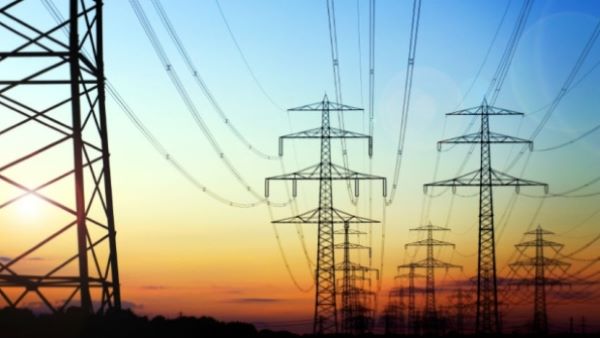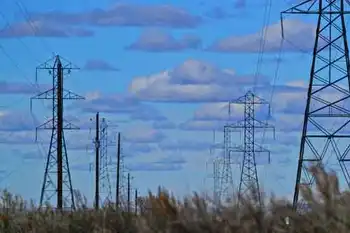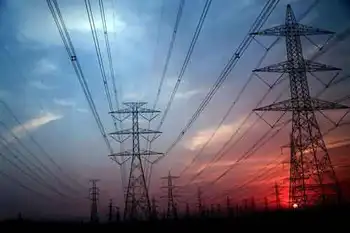Power plant officials say ‘dirtiest’ list data outdated
The Tennessee Valley Authority's Paradise plant in Drakesboro is listed as among the "50 Dirtiest" for emissions of carbon dioxide (CO2), nitrogen oxide (NOx), mercury and sulfur dioxide (SO2). Owensboro Municipal Utilities' Elmer Smith plant is also listed for the amount of carbon dioxide and NOx it releases for every megawatt hour of energy it produces - while the American Electric Power plant in Spencer County, Ind., made the lists for high annual emissions of carbon dioxide, sulfur dioxide, mercury and NOx. But representatives from the companies that operate the power plants countered by saying the data cited is old and doesn't take into account new pollution controls.
Power officials also said regulations that will take effect in 2009 will greatly reduce nitrogen oxide emissions. The Environmental Integrity Project ranked power plants using the Environmental Protection Agency's Emissions Tracking System, which gathers utility industry reports on carbon dioxide, sulfur dioxide and nitrogen oxide emissions.
The data on mercury comes from the EPA's Toxic Waste Inventory.
Using this data, the report found the AEP plant in Rockport, Ind., released 20.181 million tons of carbon dioxide in 2006, making it the seventh heaviest CO2 emitter that year. The Paradise plant ranked 24th, with 15.497 million tons of CO2 released las year.
OMU's Elmer Smith plant generated 2.8 million tons on CO2 in 2006 while generating 2.205 million megawatt hours of electricity. The plant is ranked the ninth dirtiest in CO2 emissions per megawatt hour and is ranked 12th in the amount of NOx released pe megawatt hour generated. Eric Schaeffer, executive director of the Environmental Integrity Project, said the nation's oldest power plants fared the worst in the report because some have not added pollution controls. The larger plants produce more carbon dioxide, as do plants burning high-carbon coal, which is common in the western United States, Schaeffer said.
"If you've got a big coal plant, you've got a lot of carbon," Schaeffer said. All coal-fired plants produce carbon dioxide equally. "They basically all get 12 miles per gallon," Schaeffer said. "... It's (just) a matter of size."
Melissa McHenry, manager for corporate media relations at American Electric Power, said the sheer size of the Rockport plant makes it a large emitter. "Rockport hits the list, if you look at the list of total emissions, because it's one of the largest plants in the United States," McHenry said. But McHenry said the plant does not rank in the top 50 for emissions per megawatt hour in many areas, which shows the plant is efficient.
It only ranked among the top 50 polluters per megawatt hour in mercury emissions, where it is 43rd. "AEP has invested $5 billion over the last few years on environmental controls at the Rockport plant," McHenry said. The plant burns coal that is higher in carbon but lower in sulfur, which produces sulfur dioxide, McHenry said. The company is testing additional mercury controls to comply with federal regulations.
McHenry said the Rockport plant is fully in compliance with all federal requirements on emissions. "The EPA has regulations for emissions already," she said. "All of these plants (in the report) operate in full compliance. None of these plants operate over their permits."
Sonya Dixon, spokeswoman for OMU, said the plant complies with all federal emissions regulations.
Carbon dioxide - which is widely recognized as a greenhouse gas - is not federally regulated, Dixon said. The Elmer Smith plant is smaller than other power plants and is therefore less efficient, Dixon said. The company has invested over $170 million in pollution controls since 1990, including $48 million in 2003. In 2009, federal regulations will require the plant to run the NOx scrubber on the first generating unit year-round, which will greatly reduce NOx emissions, Dixon said.
Currently, the law only requires the NOx scrubber be run from May through September.
"We are always looking at new technologies," Dixon said. "We've made a large investment (in pollution controls).... Obviously, we take this very seriously." Jack Brellenthin, senior manager of environmental policy for TVA, said the Paradise plant in Drakesboro is one the largest coal-fired power plants in the TVA system - which means it emits more than other facilities.
"It's one of TVA's flagship plants, so it runs a lot," Brellenthin said. "At Paradise, all three units have state-of-the-art controls for SO2 and NOx." Gil Francis, a spokesman for TVA, said the "Dirty Kilowatts" report uses old data.
The data on carbon dioxide, sulfur dioxide and NOx is from 2006, while the most recent mercury data is from 2005. "They've not given us credit for the things we've done," Francis said. "We've just added a third scrubber at Paradise." Brellenthin said: "One of the problems with the report is it's a snapshot in time.... It doesn't take into account long-term trends... and improvements we've made over time."
The utility has reduced its NOx emissions system-wide by 80 percent since 1995 and has reduced sulfur dioxide emissions by 80 percent since its peak in 1977, Brellenthin said. Scrubbers at the Paradise plant are removing 80 percent of the mercury, he said.
NOx emissions will decline in 2009, when those scrubbers begin running year-round, Brellenthin said. Schaeffer said, overall, power plants reduced sulfur dioxide emissions by 8 percent, and said carbon dioxide emissions declined 1 percent. But carbon dioxide emissions rise and fall, so the decline does not indicate a downward trend, he said. Schaeffer said people should be aware the electricity they use creates pollution.
"Turn off the computer when you're done, turn that light off when you're done.... Think about what that's connected to," he said. "Know what these power plants put out. If you've got one of those big plants, you have the carbon equivalent of 2 million summers.
"There's nothing like a coal plant in terms of scale," Schaeffer said. "You've got the northeast states struggling to curb greenhouse emissions.... The CO2 from two coal plants is greater than all of those efforts combined."
Related News

TransAlta Poised to Finalize Alberta Data Centre Agreement in 2025
CALGARY - TransAlta Corp., one of Alberta’s leading power producers, is moving toward finalizing agreements with partners to establish a data centre in the province, aiming to have definitive contracts signed before the end of the year.
CEO John Kousinioris stated during an analyst conference that the company seeks to secure exclusivity with key partners by mid-year, with detailed design plans and final agreements expected by late 2025. Once the contracts are signed, the data centre is anticipated to be operational within 18 to 24 months.
Data centres, which are critical for high-tech industries such as artificial intelligence, consume large…





